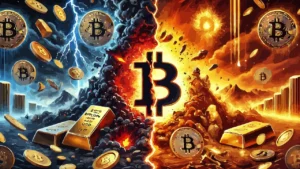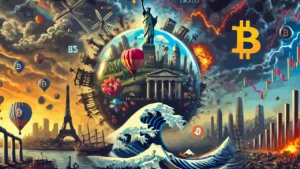In recent years, the BRICS (Brazil, Russia, India, China and South Africa) have become the subject of growing speculation regarding their ability to redefine international trade. The introduction of the so-called BRICS+, with the inclusion of new emerging economies, has further fueled these hypotheses. However, it is necessary to critically assess whether this group really has the strength and tools to propose an alternative model to the Western system or whether we are witnessing an overestimation of their potential.
Contents
#1. BRICS+: revolution or perception?
The recent expansion of BRICS into BRICS+ includes economies such as Egypt, Iran, Ethiopia, and the United Arab Emirates. While this expansion certainly increases the group’s geopolitical clout, it may be a stretch to talk about concrete economic “strengthening.” Domestic political differences, divergent economic interests, and internal competition between China and India for leadership threaten to limit the group’s cohesion and effectiveness. For example, China and India maintain open territorial tensions and deep trade differences that hinder their full cooperation. Russia, for its part, is experiencing significant international isolation due to recent Western sanctions, making its economic interaction with other members of the group complex. Brazil also faces domestic economic challenges that could limit its ability to actively participate.
The inclusion of Iran (under Islamic rule) could also be a double-edged sword: on the one hand, it strengthens the geopolitical weight of BRICS+ thanks to its strategic position and energy resources, on the other hand, it risks attracting criticism and isolation from Western countries. Similarly, countries like Ethiopia, despite being an important economic partner in Africa, could bring with them problems of internal stability and regional conflicts that would further weaken the homogeneity of the group.
In essence, the perception of strengthening due to expansion could prove to be an oversimplification. Enlargement brings with it symbolic advantages and an indisputable strategic potential, but also an amplified internal complexity that could slow down or completely prevent real cohesion. The lack of consolidated internal institutions capable of managing this complexity risks transforming the group from a potential global alternative to a simple geopolitical aggregate without real operational effectiveness.
#2. New currency: feasibility and problems
The idea of creating a common BRICS+ currency to reduce the hegemony of the US dollar in global trade is attractive but presents substantial problems. The structural differences between the economies involved, the lack of a common regulatory framework and, above all, the mutual distrust between some countries (especially India and China) could make it impossible to create and manage a stable, common and internationally accepted currency. China’s recent attempt to promote the digital Yuan, greeted with skepticism by other members, highlights these critical issues.
Furthermore, monetary management of a common currency requires supranational banking institutions, similar to the European Central Bank, which do not currently exist in BRICS+. The economies of these countries vary greatly: the monetary stability of India and China contrasts sharply with the economic volatility of Brazil and South Africa. This diversity would further complicate the adoption of shared monetary policies.
Mutual distrust among member countries, combined with the lack of consensus on which currency to use as a reference (Chinese Yuan or Russian Ruble, for example), makes the goal of a common currency even more distant from operational reality. Added to this is the possible geopolitical backlash from the United States and the European Union, which could see such a move as a direct threat to their global economic interests.
Thus, while the idea of an alternative currency to the dollar is conceptually attractive, in practice it currently appears unlikely. Domestic political and economic difficulties, combined with significant external pressures, make this possibility at present more of a theoretical ideal than a real prospect.
#3. Gold as a monetary base
Gold is frequently mentioned as a possible monetary base for the new BRICS+ currency, creating expectations of greater stability than Western fiat currencies. However, this vision is simplified and idealized. Volatility in the price of gold, driven by complex global factors such as speculative demand, mining production and international political decisions, could undermine the stability of a currency based on this precious metal.
Furthermore, the practical management of shared gold reserves presents enormous logistical and diplomatic challenges. Who would physically manage these reserves? How would they be divided equitably among the various members? Countries with weaker or unstable economies could claim more gold than stronger ones, generating potential internal conflicts. The role of global financial markets, dominated by the West, would also pose a real problem, making the BRICS+ currency vulnerable to external speculation and economic manipulation.
The use of gold may seem attractive for historical and symbolic reasons, evoking a monetary stability that predates the Bretton Woods system. However, the gold standard has historically demonstrated significant limitations, such as rigidity in monetary policy and an inability to react quickly to economic crises. Adopting such a model could severely limit the BRICS+’s ability to effectively deal with recessions or economic shocks, thus increasing the internal economic vulnerability of weaker members.
#4. Doing without the west
The conspiracy narrative (or that of the Westerner suffering from chronic guilt) portrays BRICS+ as an inevitable response to a West portrayed as unjust, oppressive and imperialist. However, it is necessary to adopt a critical and impartial view to fully understand the complexity of the situation. Many emerging countries may legitimately feel marginalized by Western economic policies, especially by the international financial system dominated by institutions such as the IMF and the World Bank.
On the other hand, the BRICS+ desire for autonomy does not stem exclusively from ideological or ethical motivations, but is also the result of geopolitical and commercial calculations. For example, China seeks to expand its economic influence through initiatives such as the Belt and Road, while Russia sees BRICS+ as a concrete possibility to counter its Western isolation. India and Brazil may instead see the group as a means to increase their international diplomatic voice, without necessarily fully sharing common goals and strategies.
In conclusion, attributing the BRICS+ split exclusively to “good guys versus bad guys” dynamics is a dangerous trivialization. The real motivations are complex and often driven by geopolitical opportunism, national development strategies and specific economic goals rather than by a radical ideological opposition.
#5. BRICS+, geopolitics and conspiracies
The emergence of BRICS+ as a global geopolitical player is now a given, but it is equally true that representing them as the new “light” of international trade appears overly optimistic and simplistic. Despite the growing economic weight of China and India, the group as a whole is still far from having the necessary cohesion to propose itself as a real alternative to the Western system.
Internal tensions among members, mutual economic competition, and the absence of a common institutional framework capable of effectively coordinating economic and political decisions represent concrete and significant obstacles. Although it is true that the relative weight of the dollar in global trade is slowly decreasing, the international financial system remains highly integrated and dependent on institutions and mechanisms created and dominated by Western countries.
The reality, therefore, is far more nuanced than the simplistic and idealized narrative that celebrates their rise as inevitable. BRICS+ could certainly influence the global balance, but to do so they will first have to solve concrete and complex problems, going far beyond simple declarations of intent and optimistic perceptions of their potential global leadership.











Leave a Reply